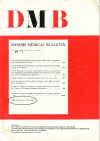过敏性和非过敏性鼻炎患儿的上、下气道病理。
摘要
在工业化国家,过敏性和非过敏性鼻炎是儿童非常常见的疾病。尽管父母和医生普遍不重视这些情况,但它们对受影响儿童的生活质量造成了重大影响,并导致卫生保健资源大量流失。不幸的是,诊断特异性受到非特异性症状史和缺乏可靠诊断测试的阻碍,这可能解释了为什么这种诊断背后的病理知之甚少。提高对幼儿变应性和非变应性鼻炎病理生理学的理解,可能有助于发现新的发病机制,并有助于指导未来的研究,制定正确的预防措施,以及对儿童鼻炎进行充分的监测和治疗。哮喘是变应性鼻炎患者的常见合并症,流行病学调查表明,上呼吸道和下呼吸道疾病之间存在密切联系,即“联合航空公司概念”。此外,上、下气道疾病之间的关联似乎也存在于非特应性个体中。然而,这种关联的性质尚不清楚,并且缺乏客观化幼儿这种关联的数据。本论文的目的是描述来自COPSAC出生队列的患有研究者诊断的过敏性和非过敏性鼻炎的幼儿上呼吸道和下呼吸道的病理学。鼻塞是变应性和非变应性鼻炎的关键症状,嗜酸性粒细胞炎症是变应性疾病的标志。在论文1中,我们对变应性鼻炎、非变应性鼻炎和健康对照儿童的鼻嗜酸性粒细胞增多和鼻气道通畅进行了声学鼻测量。变应性鼻炎与鼻嗜酸性粒细胞增多和不可逆鼻气道阻塞显著相关,提示6岁儿童的鼻黏膜存在慢性炎症和结构重塑。非变应性鼻炎患儿鼻气道通畅无变化,但鼻嗜酸性粒细胞增多,但较变应性鼻炎患儿少。这些发现提示过敏性和非过敏性鼻炎的不同病理,这可能对幼儿鼻炎的早期药物治疗具有重要的临床意义。在论文II中,我们利用论文I导出的鼻气道通畅终点来检查上、下气道通畅是否相关。采用声学鼻测量法评价鼻内α-激动剂前后上呼吸道通畅度,吸入β -激动剂前后肺活量测定法评价下呼吸道通畅度。上下气道通畅与体型、鼻炎和哮喘密切相关且独立。这种关联在基线值和减充血鼻气道通畅和β2后FEV1方面都是一致的。血液和鼻嗜酸性粒细胞增多也与鼻气道阻塞有关。这表明气道尺寸普遍缩小是儿童早期哮喘和鼻炎并发症状的一个新的易感因素,并支持哮喘和鼻炎共同病理生理的概念。这些发现的临床解释是,所有出现鼻炎或哮喘的儿童都应被认为是整个呼吸道发炎。在论文III中,我们旨在描述学龄前儿童过敏性鼻炎和非过敏性鼻炎相关的哮喘和中间哮喘终点。在7岁时,我们评估了哮喘、湿疹、食物致敏和聚丝蛋白突变的患病率;总IgE、FeNO和血嗜酸性粒细胞水平;肺功能和支气管对干冷空气的反应。我们发现哮喘与过敏性和非过敏性鼻炎相似,这表明上呼吸道和下呼吸道疾病之间的联系不仅仅是过敏相关的炎症。只有变应性鼻炎患儿支气管反应性增高,FeNO升高,表明变应性鼻炎和非变应性鼻炎患儿哮喘症状的内源性不同。我们还发现非哮喘变应性鼻炎患儿的支气管高反应性和FeNO值升高,提示亚临床支气管炎症,并支持变应性疾病过程累及上、下气道。总之,这些观察结果客观地显示了过敏性和非过敏性鼻炎幼儿鼻病理的显著差异,并支持上呼吸道和下呼吸道疾病之间的密切联系,部分来自过敏驱动的过程,但同样来自非过敏性机制。Allergic- and non-allergic rhinitis are very common diseases in childhood in industrialized countries. Although these conditions are widely trivialized by both parents and physicians they induce a major impact on quality of life for the affected children and a substantial drainage of health care resources. Unfortunately, diagnostic specificity is hampered by nonspecific symptom history and lack of reliable diagnostic tests which may explain why the pathology behind such diagnoses is poorly understood. Improved understanding of the pathophysiology of allergic- and non-allergic rhinitis in young children may contribute to the discovery of new mechanisms involved in pathogenesis and help direct future research to develop correctly timed preventive measures as well as adequate monitoring and treatment of children with rhinitis. Asthma is a common comorbidity in subjects with allergic rhinitis and epidemiological surveys have suggested a close connection between upper and lower airway diseases expressed as the "united airways concept". Furthermore, an association between upper and lower airway diseases also seems to exist in non-atopic individuals. Nevertheless, the nature of this association is poorly understood and there is a paucity of data objectivizing this association in young children. The aim of this thesis was to describe pathology in the upper and lower airways in young children from the COPSAC birth cohort with investigator-diagnosed allergic- and non-allergic rhinitis. Nasal congestion is a key symptom in both allergic- and non-allergic rhinitis, and eosinophilic inflammation is a hallmark of the allergic diseases. In paper I, we studied nasal eosinophilia and nasal airway patency assessed by acoustic rhinometry in children with allergic rhinitis, non-allergic rhinitis and healthy controls. Allergic rhinitis was significantly associated with nasal eosinophilia and irreversible nasal airway obstruction suggesting chronic inflammation and structural remodeling of the nasal mucosa in children already at age 6 years. Non-allergic rhinitis exhibited no change in the nasal airway patency, but some nasal eosinophilia albeit less than children with allergic rhinitis. These findings suggest different pathology in allergic- and non-allergic rhinitis which may have important clinical implications for early pharmacological treatment of rhinitis in young children. In paper II, we utilized the nasal airway patency end-points derived from paper I to examine whether upper and lower airway patency are associated. Upper airway patency was assessed by acoustic rhinometry before and after intranasal α-agonist and lower airway patency by spirometry before and after inhaled β2-agonist. Upper and lower airway patencies were strongly associated and independent of body size, rhinitis and asthma. The association was consistent for both baseline values and for decongested nasal airway patency and post-β2 FEV1. Blood and nasal eosinophilia were also associated with nasal airway obstruction. This suggests generalized diminished airway dimensions as a novel susceptibility factor for concurrent symptoms of asthma and rhinitis in early childhood and supports the notion of a common pathophysiology in asthma and rhinitis. The clinical interpretation of these findings is that all children presenting either rhinitis or asthma should be considered inflamed in the entire respiratory tract. In paper III, we aimed to describe asthma and intermediary asthma end-points associated with allergic- and non-allergic rhinitis in preschool-aged children. At age 7 years, we evaluated prevalence of asthma, eczema, food sensitization, and filaggrin mutations; levels of total IgE, FeNO, and blood-eosinophils; lung function and bronchial responsiveness to cold dry air. We found that asthma was similarly associated with allergic- and non-allergic rhinitis suggesting a link between upper and lower airway diseases beyond an allergy associated inflammation. Only children with allergic rhinitis had increased bronchial responsiveness and elevated FeNO suggesting different endotypes of asthma symptoms in young children with allergic- and non-allergic rhinitis. We also found bronchial hyperresponsiveness and raised values of FeNO in children with allergic rhinitis without asthma suggesting sub-clinical bronchial inflammation and supporting the allergic disease process to involve both upper and lower airways. In conclusion, these observations objectively show marked differences in nasal pathology in young children with allergic- and non-allergic rhinitis and lend support to a close connection between upper and lower airway diseases partly from an allergy driven process, but equally from non-allergic mechanisms.

 求助内容:
求助内容: 应助结果提醒方式:
应助结果提醒方式:


